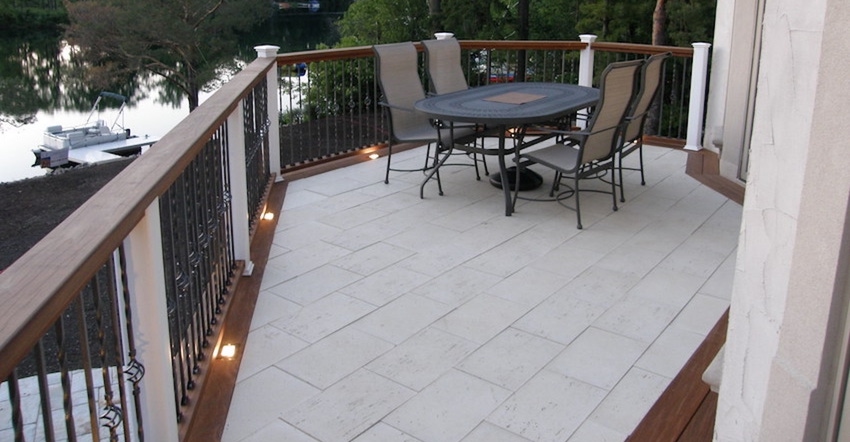The Benefits of Engineered Polymer Structural Support Systems
We summarize the features of these systems and how and why they are used in the creation of stone decks, as presented in a continuing education course.

An engineered polymer support system, whether used in new construction or retrofit applications, is easy to install and opens a wide range of design possibilities for stone decks, according to a StoneDeks System continuing education course.
An engineered polymer support system enables the installation of natural stone and concrete pavers and brick and porcelain pavers on wood or metal floor joists as an alternative to wood, composite or PVC flooring. Engineered polymer grates screw directly on the top of floor joists and their strong hexagonal cells provide structural support for stone or pavers, according to the presentation.
Engineered polymer grate subfloor also can be used on top of any wood or metal framing and on pedestals for rooftop applications. Furthermore, the support system permits creativity in design and options are not restricted to style and color choices.
Engineered polymer grates have been independently evaluated by the International Code Council to validate that they meet building code requirements in many places. The grates are designed to be installed on either a 16-inch OC joist system or an 8-inch OC joist system. Each grate measures 16 inches x 18 inches x 1.5 inches.
Features and benefits of an engineered polymer support system, the presentation said, include:
Decks last longer because the wood framing is protected by the grate, creating an air gap that keeps the deck frame from molding and rotting.
The hardscape can be matched to an existing or newly built deck surface, can be extended up steps and right onto the deck, and can be matched to interior finishes to tie indoor and outdoor living spaces together.
The engineered polymer support system is non-proprietary—any natural stone, concrete, clay or porcelain paver 0.5 inches to 3 inches thick can be used.
A stone patio can be positioned on a steep incline without the cost and labor of backfilling, building retaining walls, or dealing with settling issues.
A properly installed support system can resolve ground-level uplift issues in problematic soil areas.
The engineered polymer grates are easy to install and easy to cut to size.
Stone decking eliminates the intense heat, fading and warping associated with wood and composite decking.
Some important installation requirements include that the deck must be flat—there should be no rocking when you run a level over the joists.
While the specific system discussed in this article is a product from StoneDeks System, other polymer systems are available from companies such as Trelleborg and Avient.
About the Author(s)
You May Also Like




